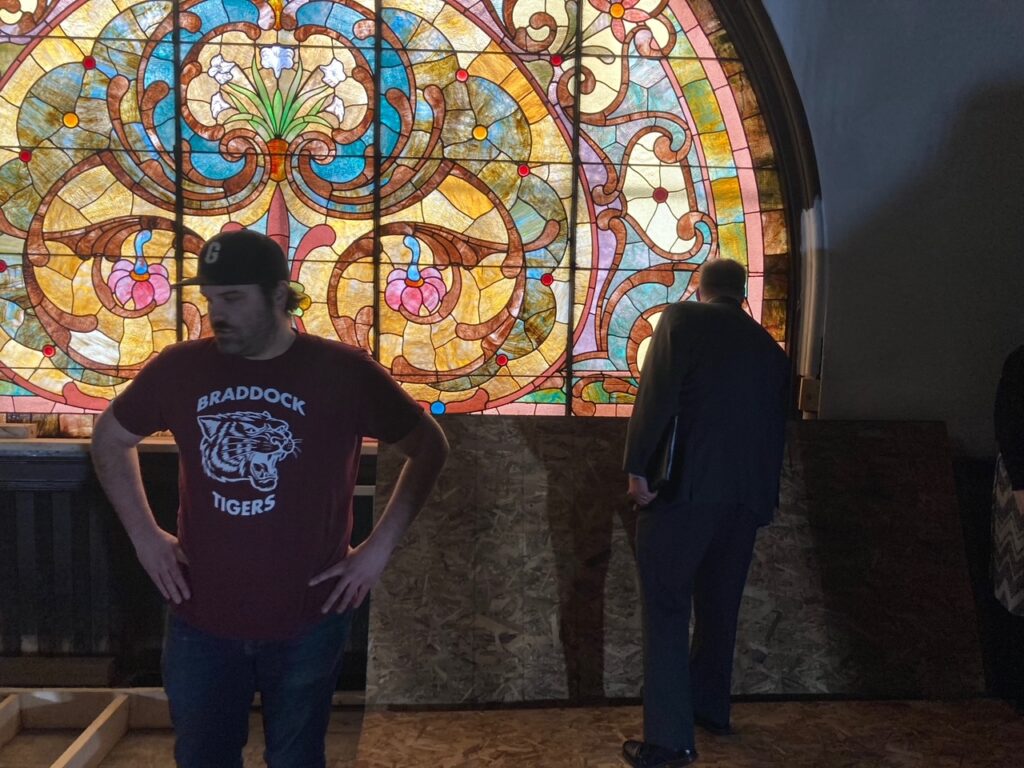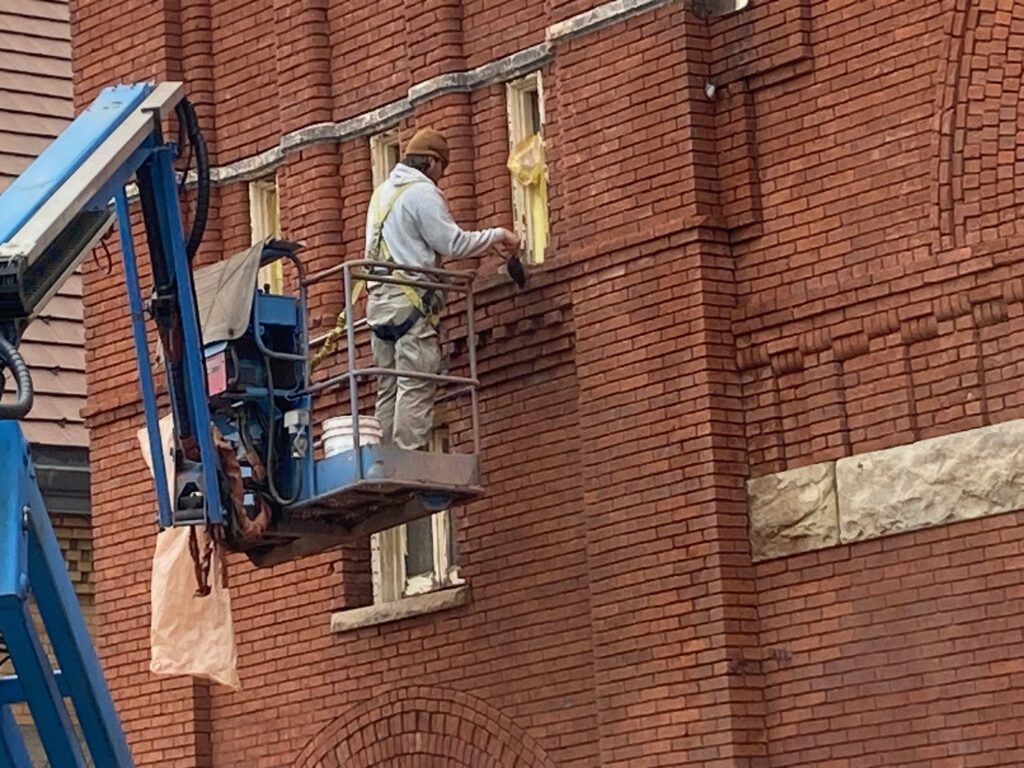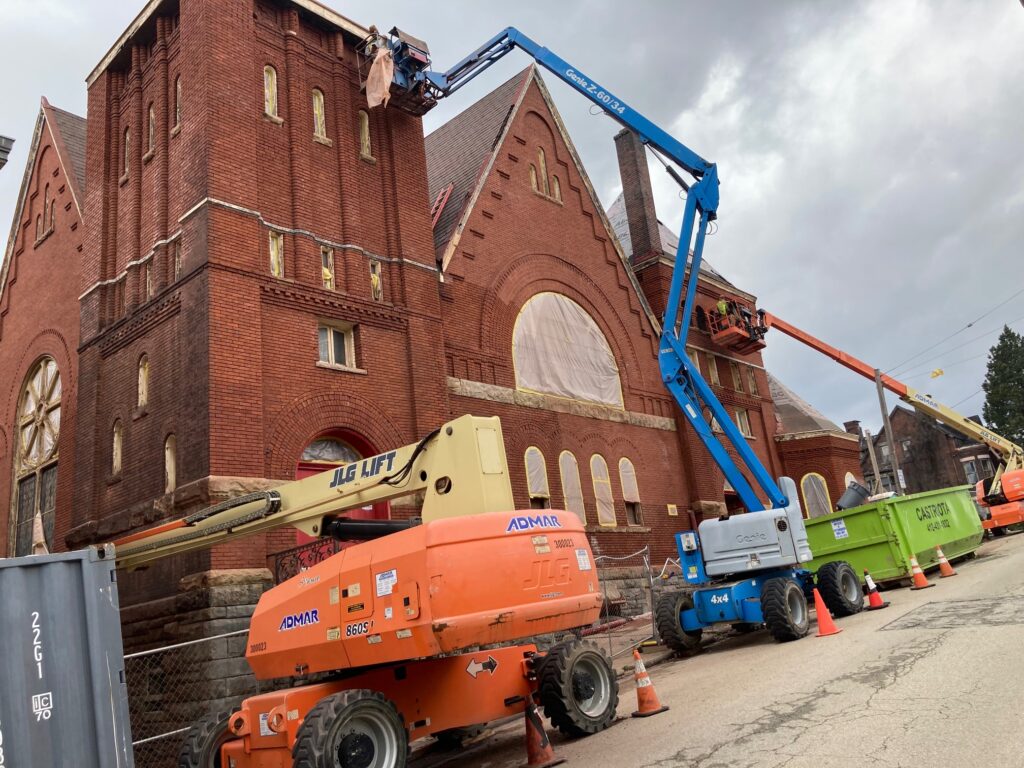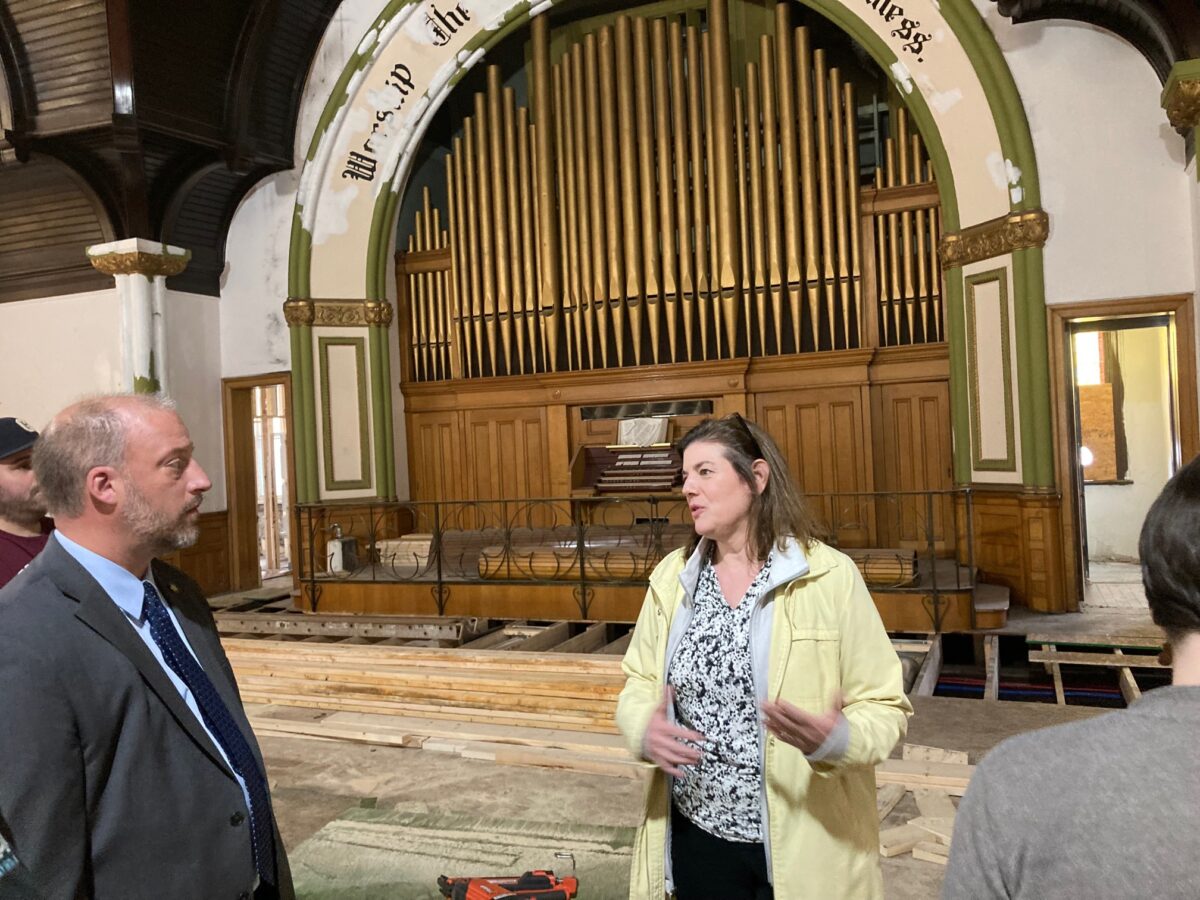It took four years to cobble together the funding from a variety of sources, but the Mon Valley Initiative is well on its way to converting the historic First Presbyterian Church in Braddock into eight apartments.
The nonprofit agency conducted a tour of the $2.9 million project Wednesday for officials from the U.S. Department of Housing and Urban Development, which provided some historic preservation tax credits for the work. With dwindling attendance, the congregation closed the church that’s on the National Register of Historic Places in 2017 and donated it to MVI with the promise that it would be repurposed for the community.
“They trusted us with this project, so we have to do it right,” said Laura R. Zinski, MVI’s chief executive officer. “Oh my goodness, it took us four years [to get the money]. We’d think we were close, then it took so long that the price would go up.”
Additionally, the building will have only eight apartments, six for low-income tenants and two at market rate, so “we were never going to be a big money-maker,” she said. Eventually, First National Bank provided a loan to supplement federal and state historic reuse tax credits and grants from the state Department of Economic Development’s Keystone Communities program and the Allegheny Foundation to allow the project to begin construction last fall.
Zinski said this has been a challenging project because it involves converting such a large, open space into apartments without changing the historic character of the building. Because of the building’s age — it opened in 1893 — that includes installing new plumbing, wiring, heating and air conditioning into a building that was built before many of the modern methods of those basics were developed.
“They’ve had to do some pretty creative things to make it work,” said Dave Yargeau, MVI’s real estate developer who is overseeing design and construction. “It’s interesting trying to retrofit things into a building that’s 130 years old.”
Zinski said the agency enlisted architect Chris Pegher, who has worked on historic buildings in the past, to lead the design for this project. Pegher couldn’t be reached for comment, but Zinski said he does a good job of blending the dreams of what could be with the reality of operating within a limited budget in a building where some ideas aren’t possible because they would alter its historic nature.

For example, the redesign keeps the remaining stained-glass windows; some were stolen a few years ago and would be too expensive to replace. The first floor will have four apartments in and around the former worship area, three in the basement that used to be a community room and one tucked into the former choir loft and small rooms on each side.
The main unit on the first floor will have two special elements that won’t be found in most apartments. It will feature a wall of pipes for the church organ — disabled so it won’t disturb neighbors — and a crystal chandelier donated by Andrew Carnegie.
Carnegie built his first steel mill, the Edgar Thomson Works, in Braddock, and his first library adjacent to the church on Parker Avenue also is undergoing major restoration.
That apartment also will have a stained-glass window on the left side and cathedral ceilings with ornate dark wood. Among the “odd” things designers had to deal with, Yargeau said, was raising part of the floor on the first level as much as 14 inches in the worship area because it previously had theater-style seating with a sloped floor.
The loft apartment will feature another large stained-glass window and arched carved-wood doorways to the side rooms barely wide enough to accommodate a normal-size adult.
“It’s just not the type of project we have fall into our hands every day,” Yargeau said. “Whatever could be saved is going to be saved.”

On Wednesday, crews for Mariani & Richards Inc. were repointing red bricks on the exterior that were power-washed last week to brighten their previous near-gray appearance. Parapets at the center of the building are having worn slate replaced with a look-alike substance that is far less expensive.
Inside, crews have finished framing the walls for the apartments and preparing for the next round of utility work. The goal is to have tenants by the end of the year.
Matthew J. Heckles, HUD’s regional administrator based in Philadelphia, called the project a “great example” of how historic tax credits should be used.
“This is a great use of creative, adaptive reuse of space,” he said as he stood under the chandelier with a large table saw and other tools around him.
“When I came in here, I said, ‘Wow, somebody really had a great vision here.’ I will talk about this when I go to other cities because it’s a great example of what we’re trying to do.”

Ed covers transportation at the Pittsburgh Post-Gazette, but he's currently on strike. Email him at eblazina@unionprogress.com.



